 Back to the Be Inspired Blog
Back to the Be Inspired Blog
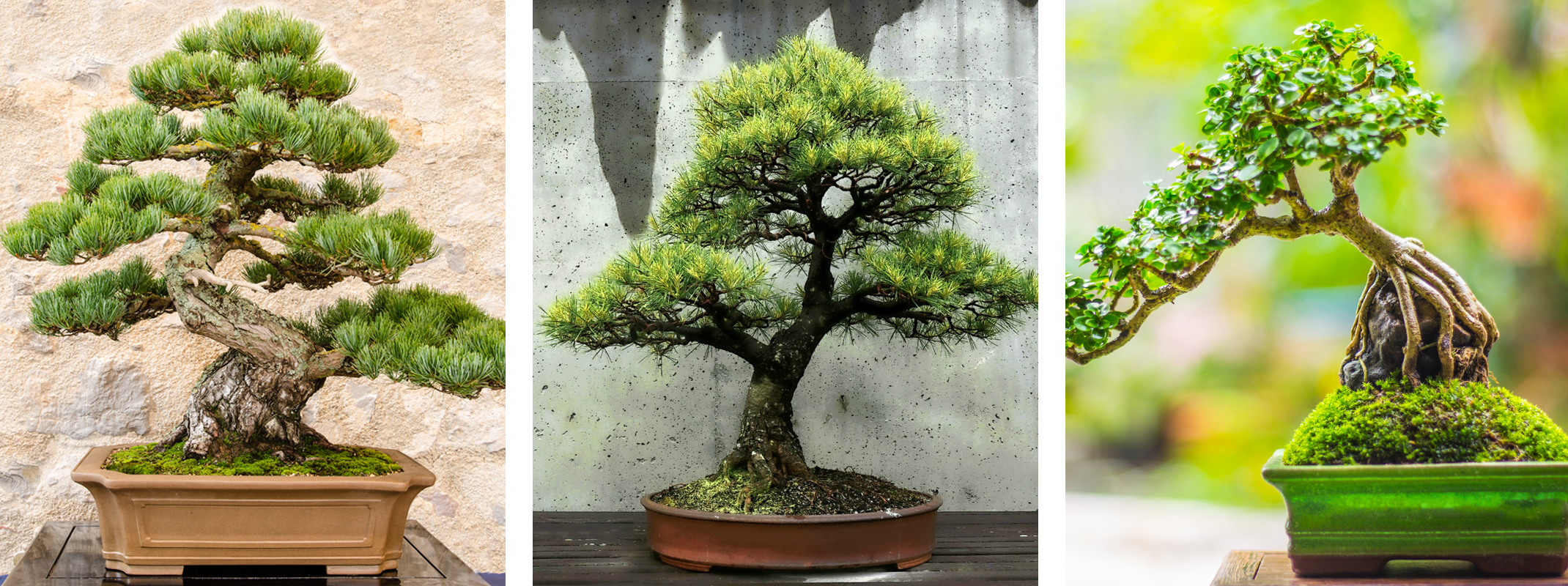
The Art of Bonsai
The art form of bonsai takes the beauty of the natural world around us and replicates nature’s grand masterpieces in miniature versions that symbolize life.
Bonsai is nicely adapted for the urban gardener who has little space and time, and is much easier to care for than you may think. Many find the art of bonsai to be relaxing, meditative and a wonderful way to connect with nature—even if you live miles away in a big city.
While there are many rules to true traditional bonsai, you don’t have to be a purist to begin this rewarding and esthetically pleasing art form. From the history of bonsai, to the many various techniques and styles used, the art of bonsai is not only pleasing to the eye but also fascinating and fun to grow. With a little planning, patience and help from your Trusted Garden Advisor at SummerWinds Nursery, you too can successfully grow a bonsai of your own…
Be Prepared to Never Fully see the Fruits of your Labor
When art is made from a living source, it is never complete. Bonsai trees live a very long time and often remain in families for hundreds of years as the tree is passed down through the generations as a precious family heirloom. Let’s get started!
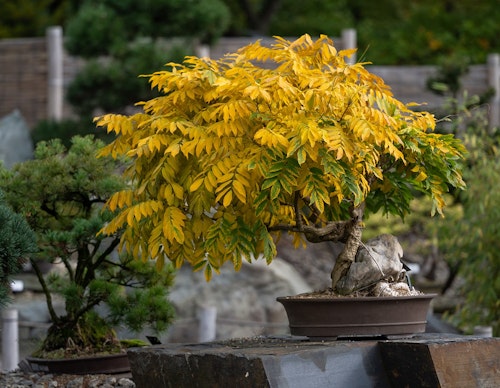 A Brief History of Bonsai
A Brief History of Bonsai
When you think about bonsai you probably think about Japan and its ties to the culture, but actually bonsai originated in China where it is called “penzai” or “pun-tsai.” Both bonsai and penzai translate to “tree in a tray” or “Tray Planting”. It is believed to have been brought to Japan approximately twelve hundred years ago. The practice was adopted by Zen monks and the blending of cultures created a new style that we know today as bonsai. The monks, who find beauty in austerity, created the tray landscape style to represent how a single tree in a pot could represent the universe. The pot and the tree are considered to be as one. So much care is put into both elements.
It wasn’t until recent years that the art of cultivating bonsai spread worldwide. Bonsai is not only an art but it is also a science. Bonsai trees are traditionally miniaturized naturally and are never genetically manipulated. Through various techniques like grafting, defoliation, potting, pruning and root reduction, a tree can be dwarfed and manipulated to mimic an adult tree. A true bonsai artist puts in the time and care to create something truly unique and personal. No two bonsai trees will ever be the same.
Bonsai for Beginners
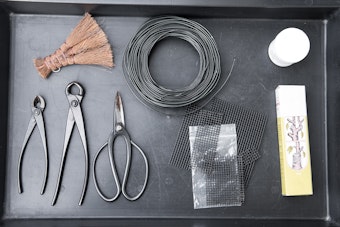 Part of the awe of bonsai is that nearly any perennial woody-stemmed tree or shrub that can be propagated can become the beginning of bonsai. Despite the elusive and almost mystical reputation that surrounds bonsai, creating your own is not as hard as it may seem.
Part of the awe of bonsai is that nearly any perennial woody-stemmed tree or shrub that can be propagated can become the beginning of bonsai. Despite the elusive and almost mystical reputation that surrounds bonsai, creating your own is not as hard as it may seem.
Following are the 4 basic steps to follow to get you started:
- Select a tree
- Select a style of bonsai that is suitable for your tree selection
- Gather the necessary ingredients to cultivate your tree: bonsai pot, potting soil, bonsai pruning scissors/shears and wiring
- Bonsai care and maintenance
Best Trees for Beginners
While bonsai can be accomplished with nearly any perennial woody-stemmed tree or shrub that can be propagated, there are a few varieties that work best for beginners. It’s important to do your research when deciding which tree will work best for you. When choosing the tree, take into consideration whether you will be growing your tree indoors or outdoors, the amount of time you have available to dedicate to your bonsai and the style you are hoping to create.
Here is a list of a few of the best bonsai trees for beginners:
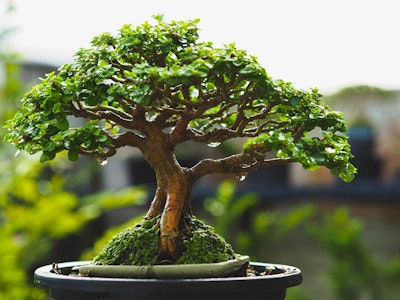 Juniper
Juniper- Ficus
- Chinese Elm
- Maple
- Dwarf Schefflera
- Jade Plant
Styles of Bonsai
To successfully style a miniature tree, a basic understanding of the different styles of bonsai is helpful. Many styles have been adapted from the traditional techniques over the years. Today, bonsai is open to interpretation and creativity and doesn’t need to conform to any certain set of rules. There is beauty in both the free art form as well as in the traditional styles.
The following is a list of some of the basic traditional styles (with their Japanese names) upon which you can use your creativity to develop your own style if you’d like:
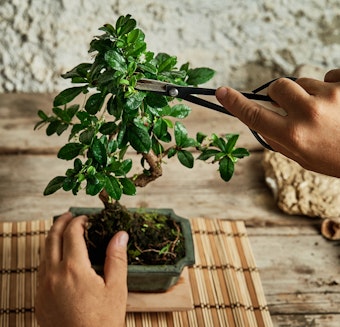 Formal Upright / Chokkann – the trunk is straight and tapering
Formal Upright / Chokkann – the trunk is straight and tapering- Informal Upright / Moyogi – a trunk that shows slight curves while primarily growing straight and upright
- Slant / Shakan – although the trunks themselves are straight, they grow out of the soil/pot at an angle
- Cascade / Kengai – the trunk of the tree bends over and falls below the base of the pot
- Half or Semi-Cascade / Han Kengai – the trunk of the tree bends over slightly and grows towards the base of the pot without extending below the base of the pot
Necessary Ingredients to Cultivate your Tree
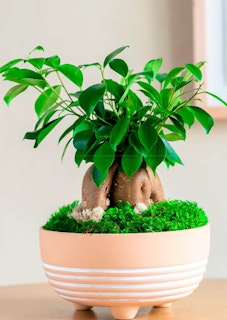 Choosing your Tray or Pot
Choosing your Tray or Pot
As was mentioned earlier, the pot and tree are considered as one, so your selection of tray or pot is one of the most important steps. Make sure you chose a tray or pot that will adequately hold your tree and support growth. It needs to be small enough that you can control growth for a prolonged period of time.
Potting Soil
Choosing the correct potting soil will depend on the type of tree you select, so make sure you do your homework once you make your tree selection. A pre-mixed soil or an orchid mix is generally best for most bonsai trees.
Bonsai Care and Maintenance
The care for your bonsai will depend a lot on the tree you choose, as care is not that same for all bonsai. To maintain and care for your bonsai tree, there are a few simple basic guidelines to prepare for so that your tree will live a long and prosperous life for generations to come. A few things to consider are:
Location
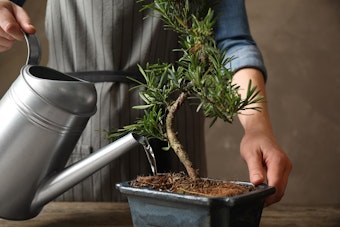 Your tree type will weigh heavily on your location decision. Knowing the needs of your tree will be extremely important to the success of your bonsai tree. In general, if your bonsai will be outdoors, you will want to choose a location that gets partial sun. If you plan to keep your tree inside, you will want to choose a spot with ample sunlight.
Your tree type will weigh heavily on your location decision. Knowing the needs of your tree will be extremely important to the success of your bonsai tree. In general, if your bonsai will be outdoors, you will want to choose a location that gets partial sun. If you plan to keep your tree inside, you will want to choose a spot with ample sunlight. Watering
A few factors will need to be considered when it comes to watering, including tree type, tree size, and the climate you live in. The soil should always be moist—but not drenched, as this can cause disease, rot, and root decay.
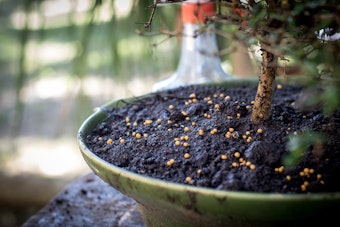 Feeding
Feeding
Fertilizing is extremely important with bonsai because of the small pot size, which reduces the amount of soil and therefore the nutrients that are typically available from that soil. As such, you will want to fertilize as often as it is recommended on the packaging of your fertilizer, in order to increase growth and maintain health.
Speak with one of SummerWinds Nursery's Trusted Garden Advisors at a store near you.
At SummerWinds Nursery we guarantee success!
Visit your local SummerWinds Nursery today and experience what our Trusted Garden Advisors can do for you! Follow us on Facebook and Instagram for more gardening tips and tricks, including SummerWinds Nursery’s helpful healthy planting hints.
Source: The Bonsai Tree Gardener (http://www.bonsaitreegardener.net/)

